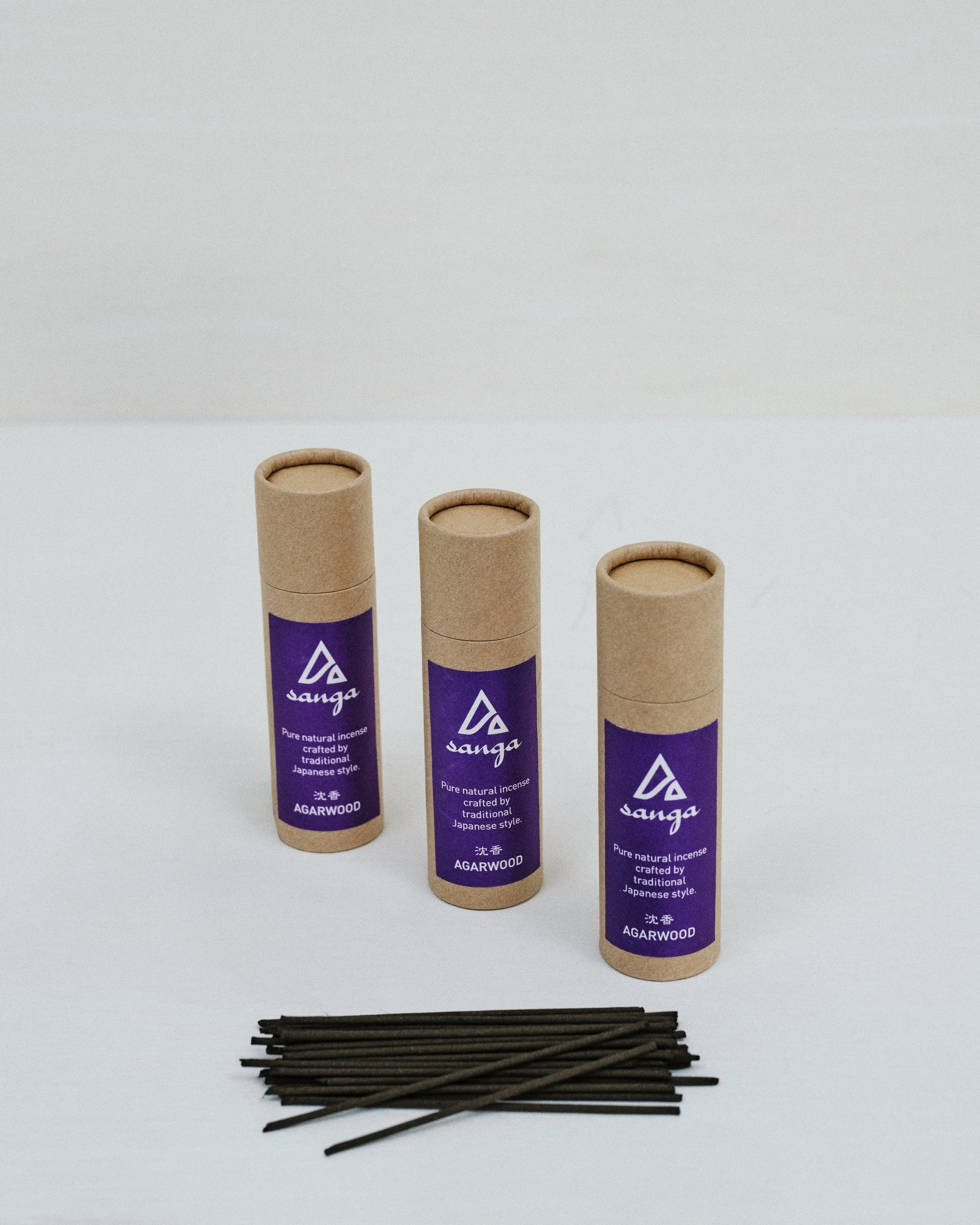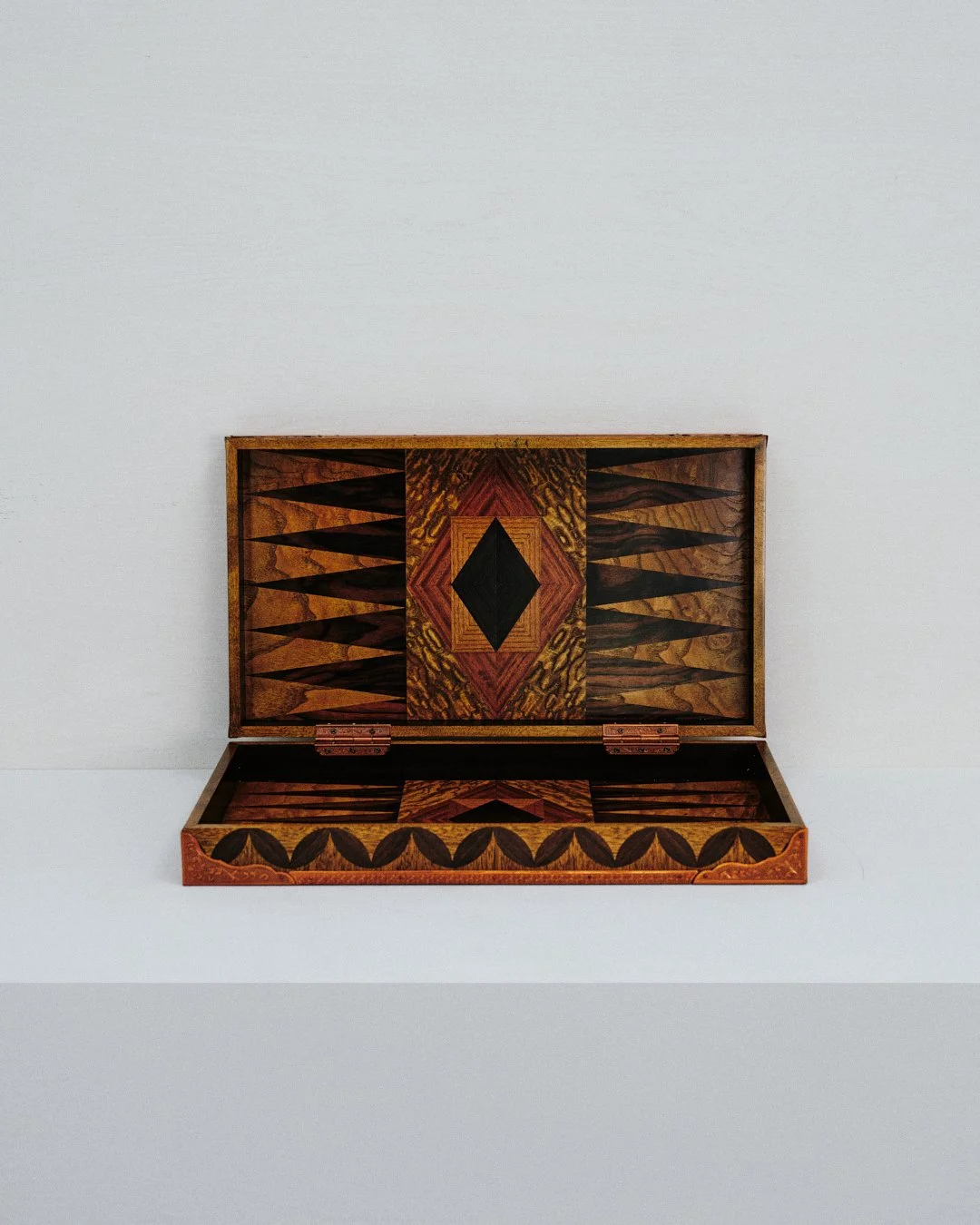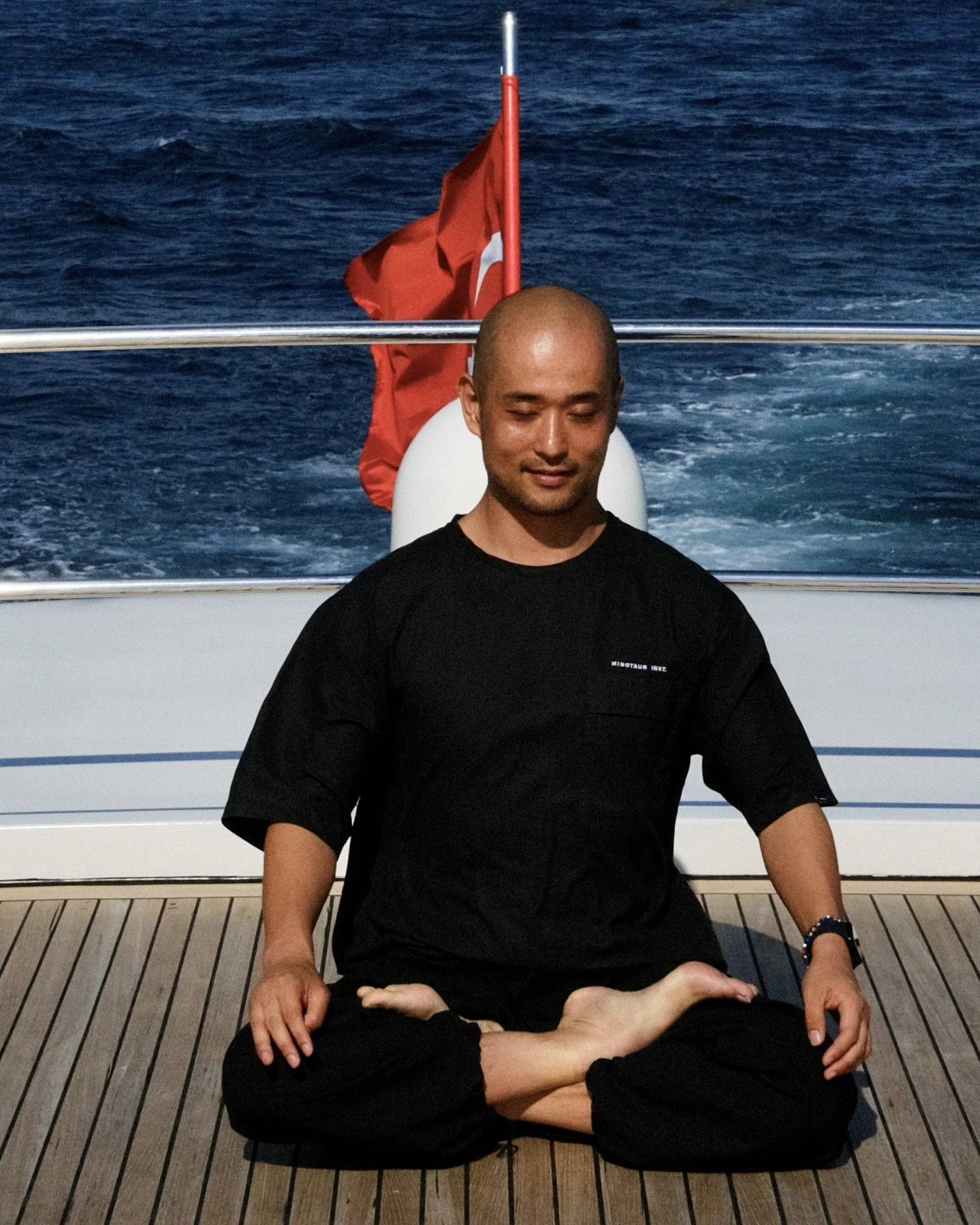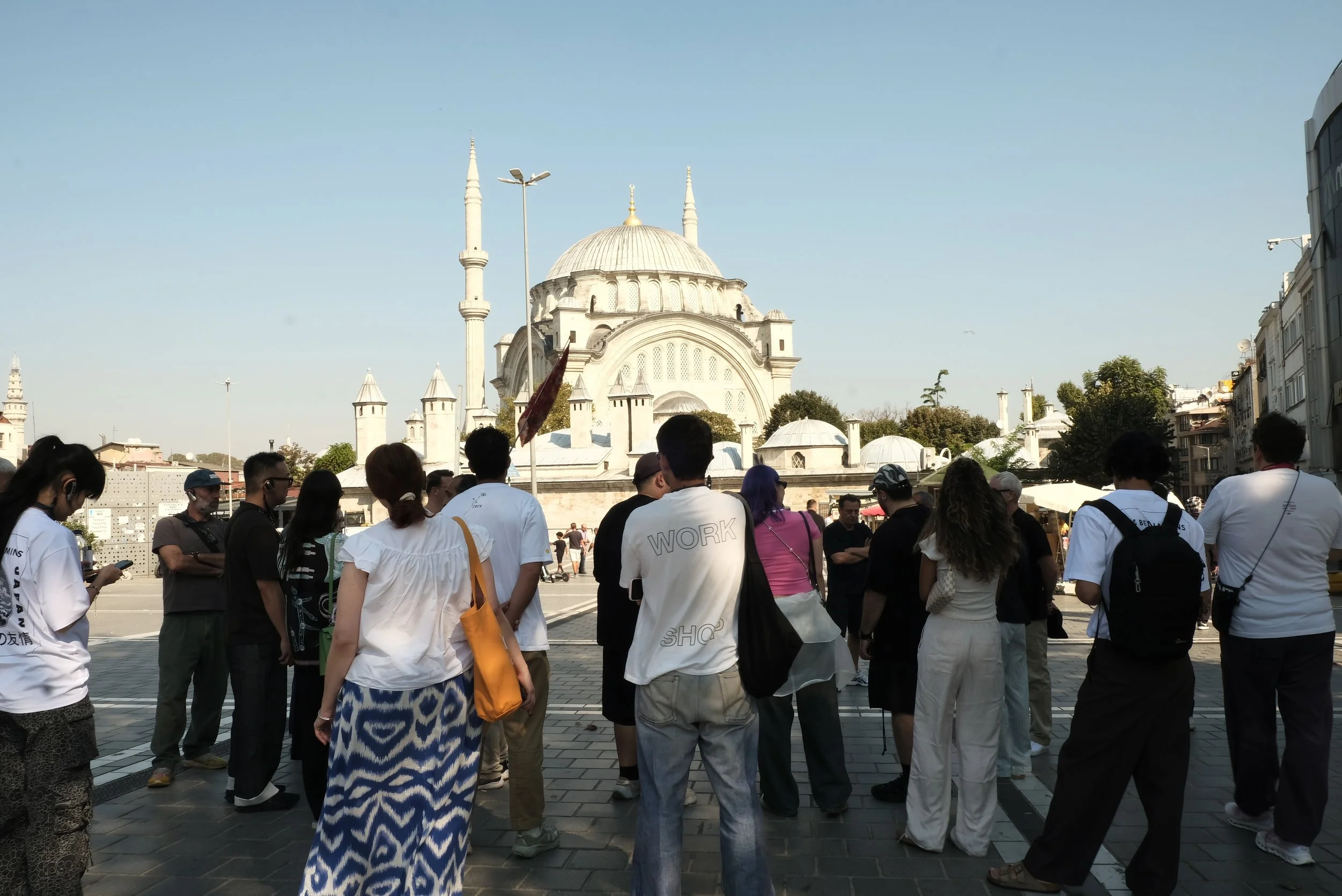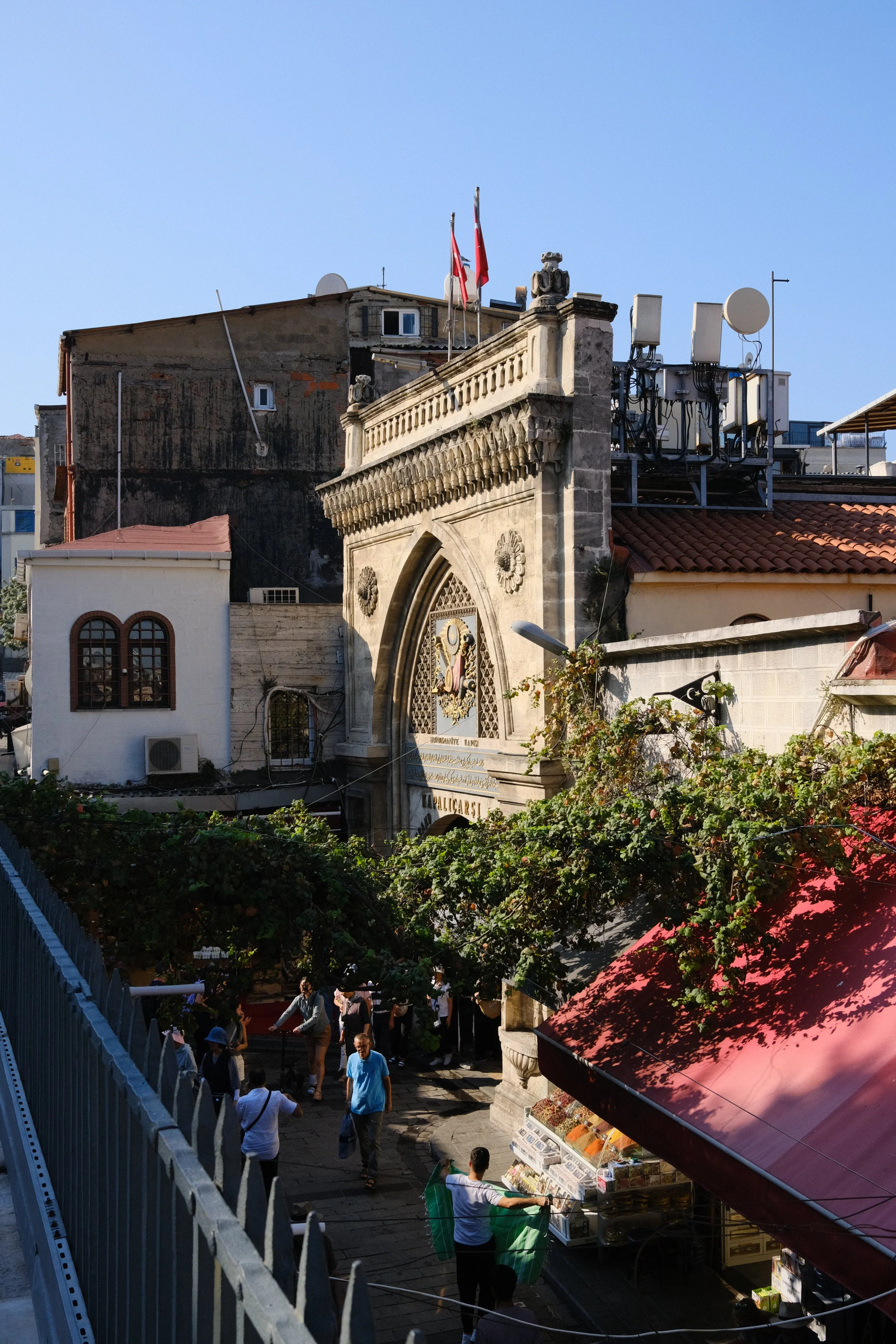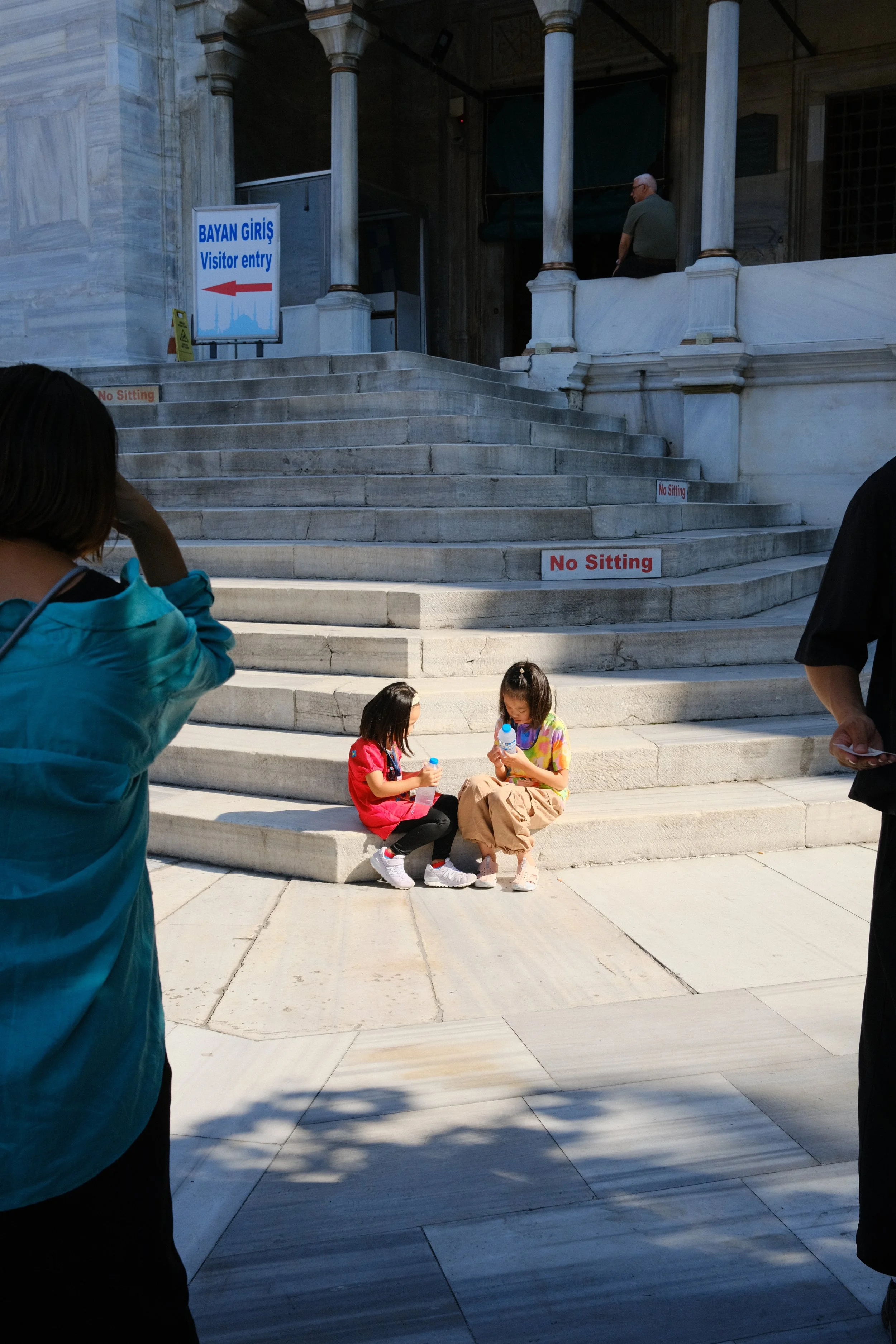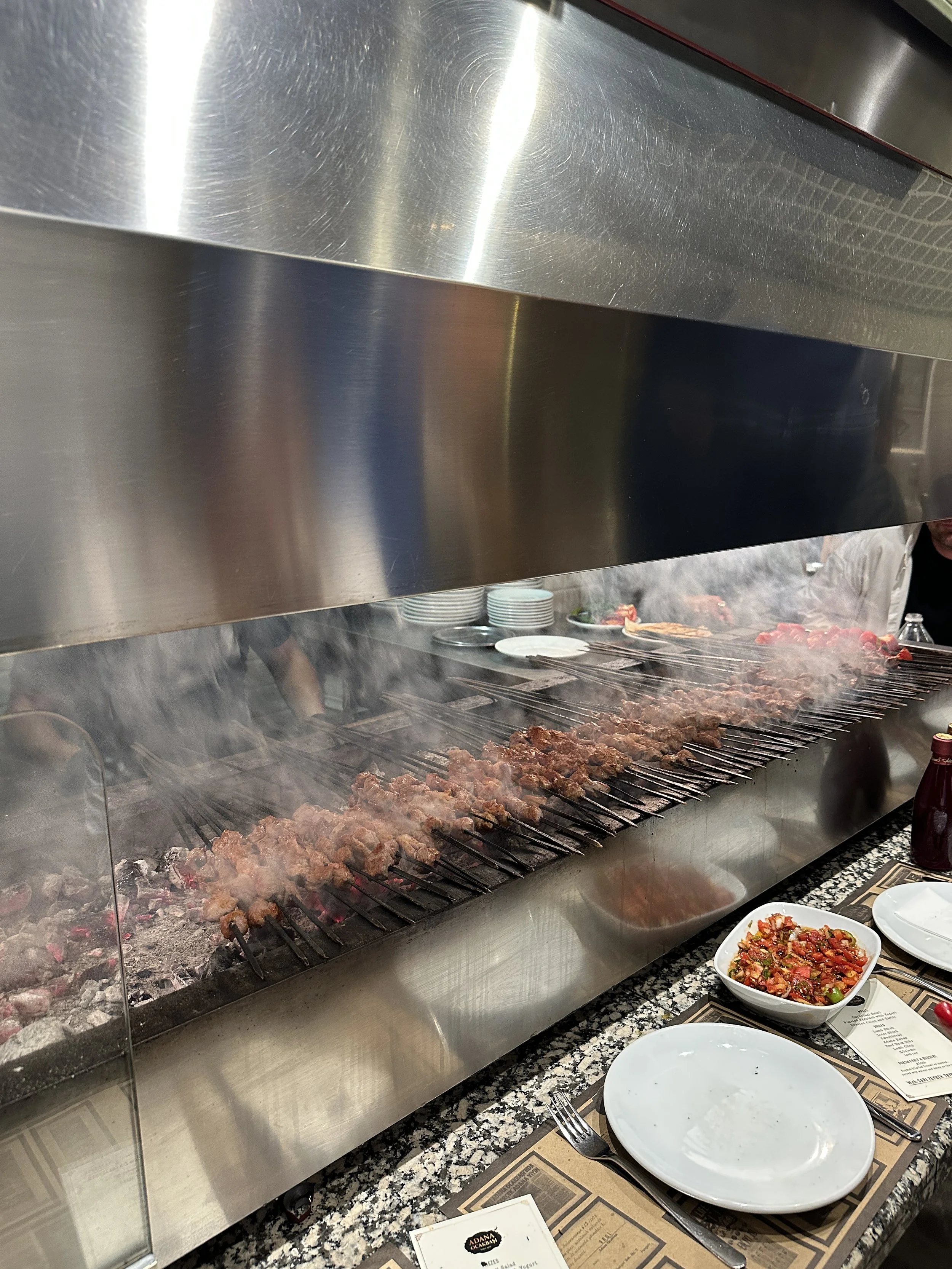From the Near East to the Far East: Celebrating 100 Years of Turkish-Japanese Friendship with Les Benjamins

One of sabukaru's core motivations has always been to bridge the West and the East. While many cities claim to be the gateway to the East, no place visually bridges the two hemispheres more than Türkiye's cultural capital, Istanbul. Divided into a European and an Anatolian [Asian] side, crossing continents is a daily routine for many of Istanbul’s 15 million inhabitants.
So, when the Turkish brand Les Benjamins invited us to their first craftweek in Istanbul, we knew we had to visit the “Near East.”
The theme of Les Benjamins’ first craftweek was the 100th anniversary of diplomatic relations between Türkiye and Japan. Founder, Bunyamin Aydin, shared that the idea for the project came during his first trip to Kyoto: “When I was in Kyoto, I met many craftsmen who welcomed me into their workshops and homes. This passion for traditional crafts reminded me of Anatolia, where centuries-old crafts are slowly fading away.” This sparked the idea for craftweek—a celebration of both Turkish and Japanese craftsmanship, building bridges between the two countries.
Japan-Türkiye relations date back to 1890 when a Turkish frigate sank off the coast of Wakayama after an audience with the Meiji Emperor. The surviving sailors were rescued by the Japanese and brought back to Istanbul. A memorial in Kushimoto commemorates this pivotal event. After the Republic of Turkey was founded in 1923, formal diplomatic relations were established in 1924. Now, 100 years later, Les Benjamins' craftweek celebrates these historic ties by highlighting artisans, some of whose family businesses date back even further than the official start of this exchange.
Takahiro Yagi
Take, for example, Takahiro Yagi, a sixth-generation tea caddy maker. His company, Kaikaido, was founded in Kyoto in 1875 and has weathered a century of ups and downs, with the art of chazutsu [tea caddy] making passed down through each generation. For the special occasion of craftweek, Yagi created a unique chazutsu featuring a pattern inspired by Turkish rugs. During the exhibition, he also hand-engraved the tea spoons that accompany the containers.
Çınar Rugs
As one of Türkiye’s most renowned traditional crafts, rug making was an integral part of the exhibition. Çınar Rugs, from the famous Cappadocia region, wove a special rug depicting the Turkish frigate from the 1890 event. The design for the rug was created by Japanese graphic designer Makoto Yamaki, who still hand-draws all of his designs.
Alparslan Babaoğlu
Alparslan Babaoğlu practices the traditional Turkish abstract art of ebru. For this special “painting technique,” the artist splashes paint on water and then transfers the design onto a canvas by “skinning” the color off the water's surface. This technique requires years of experience, and the complexity of the process makes Turkish marbling art some of the most expensive in the country.
Kakuo Kaji
As part of craftweek, visitors had the opportunity to explore Istanbul, including landmarks like the Grand Bazaar and the Topkapi Palace. The tour also led them to the Sultan Costume Collection Exhibition, which displayed clothing worn by sultans from the 15th to the 19th century. Some of these garments were dyed using the traditional indigo dyeing process, a craft with a long history in Japan. However, as Kaji Kakuo of Buaisou noted during their Indigo Dyeing workshop, while Japan isn't the only country with an indigo dyeing tradition, its methods are unique. Kaji, an indigo farmer and dyer from Tokushima, uses only organic indigo and handmade processes. For craftweek, he collaborated with Les Benjamins on a special capsule collection.
Mehmet Gürsoy
A craft shared by both countries is ceramics. While Japanese ceramics are known for their timeless, minimalist aesthetic, Türkiye has a tradition of vibrant, richly decorated ceramics. Registered as UNESCO heritage, Turkish çini are hand-painted tiles and ceramics featuring animal or geometric patterns. For craftweek, Turkish çini artist Mehmet Gürsoy created a special bowl depicting the 1890 frigate.
İznik Mavi Çini and FUTURA2000
Another participant in the exhibition was İznik Mavi Çini, a studio known for its çini artistry. The artists believe in collaboration and cultural exchange to introduce this traditional craft to new audiences. To bridge Turkish and Japanese cultures, they teamed up with artist FUTURA2000 to create a plate and cups. During the exhibition, FUTURA2000 shared a personal story: he never knew his biological family but discovered through a DNA test that he likely has Turkish ancestry, making this collaboration especially meaningful to him.
Asano Hiroki
Hailing from Kyoto, Hiroki Asano follows a centuries-old tradition of obi making. The obi, a sash wrapped around the waist, is an essential part of the kimono and often features delicate patterns and light colors, embodying the minimalist beauty of Japanese aesthetics. With fewer people buying kimonos and obis today, Asano is exploring new ways to preserve his craft. For craftweek, he created a woven table mat featuring Turkish rug patterns, blending Japanese and Turkish craftsmanship.
Hashimoto Katsuhiro
Hashimoto Katsuhiro is an incense maker from Kyoto. He explains that in Japanese, you don’t "smell" scent; rather, you "hear" it. Like music, incense evokes emotions and creates a specific atmosphere, a concept deeply valued in Japanese culture for centuries.
Kunieda Keiji & Keiichi
The ancient Silk Road once brought many cultural artifacts and products eastward, often ending up in Japan, where the island acted as a cultural collector of diverse influences. While the Silk Road is now a memory, some still bring items from the West to Japan, reshaping them to fit Japanese tastes. When Keiji Kunieda visited Europe, he knew he had to bring roses back to Japan. Due to the differences in climate and soil, he had to adapt. Now, he and his son cultivate 70 different breeds of “wabara” [Japanese roses]. For the exhibition, they sent rose tea back west, to a country with a rich tea culture.
Naitou Seiji
As a fifth-generation shoemaker, Seiji Naitou preserves a nearly vanished Japanese craft. In his workshop, he creates footwear in the same style as 100 years ago. By adapting this traditional craft to modern trends, some of his sandals have become popular again, worn by stylish young people in Kyoto and beyond. The shoes can be easily taken apart and repaired, making them sustainable as well. For Les Benjamins, he designed a special shoe once worn by geisha apprentices, using Turkish fabrics to complete the design.
Savaş Çevik
Savaş Çevik, a professor of calligraphy, is an expert in ancient writing styles. His contribution to the exhibition is a canvas that reads “Over a Century of Japan-Türkiye Friendship” in the traditional Talik calligraphy style.
Tsutsumi Takuya
Craftsmanship often goes hand in hand with a deep respect for nature, as seen in the art of urushi—Japanese lacquerware. The lacquer that Takuya Tsutsumi works with is derived from a special birch tree that takes 15 years to grow and produces no more than 200 grams of urushi. With this in mind, Tsutsumi says, a craftsman must always remain connected to nature. His backgammon board for Les Benjamins uses urushi for glazing and is decorated with symbols representing both Japan and Türkiye.
Taner Alakuş
Miniature artist Taner Alakuş contributed a map-like artwork depicting the tragedy of the Turkish frigate through his artistic expression. He notes that in both Japanese and Turkish cultures, there is always a deep appreciation for heritage, whether in cuisine or art.
Ito Toryo
As the high priest of Kyoto’s Ryosukuin Temple, Toryo Ito explains how creativity and Zen Buddhism are interconnected. "Zen Buddhism is the foundation for creativity," he says. Often, we are held back by past memories or daily stresses. If you can free yourself from these, you create space—the true source of creativity and inspiration. In his meditation workshop, he guided a group of participants through the initial steps of Zen.
Nazmi İnce
If you’ve ever stayed in a traditional Japanese ryokan [inn], you’ve likely experienced the layout of a futon, with its open sheets that reveal the pattern of the actual blanket. Turkish bedding is arranged in a similar way, with the quilted blanket playing a key role in the overall visual aesthetic. Nazmi İnce, a craftsman from Istanbul, specializes in quilting. He says that it takes "effort, patience, love, and honesty" to create these colorful blankets.
Throughout the week, these special products were displayed at Les Benjamins' flagship store in Nişantaşı, accompanied by workshops and live performances. All the craftsmen were featured in a short film by Cano Rojas, documenting both Japanese and Turkish traditions.
Other workshops gave people in Istanbul the chance to immerse themselves in the art of Ikebana [flower arranging], Bonsai, calligraphy, paper cutting, and traditional Japanese tea ceremonies.
Many of the Japanese participants traveled to the Turkish capital to explore the city and its rich Ottoman heritage. One notable experience was visiting a traditional Turkish bathhouse, known as a hamam in the Muslim world. Like the sentō, it is a public bathing culture with centuries of history, but the two are quite different. Traditionally, the hamam served two main purposes: ritual ablutions and hygienic cleansing. Nowadays, it is more about the experience, and daily visits are less common. In a hamam, a bath attendant washes and massages you, rather than simply enjoying a soak in a hot bath.
After being thoroughly steamed, relaxed, and with joints cracked, you can step out into the Mediterranean climate and savor the many exciting dishes of Turkish cuisine. What might initially seem as difficult as in Japan—finding vegetarian and vegan options—soon turns out to be quite easy. Many of the appetizers [meze] and main dishes are naturally meat-free. But of course there is also plenty of hearty kebab. Whether it’s a simple, honest sandwich or elevated skewers, Istanbul offers kebabs in all forms and flavors. In general the culinaric landscape you can explore is limitless. For an easy lunch at one of the many long-time-running family businesses or high end places like Efendy or Arkestra.
But the real indulgence comes with dessert, typically enjoyed after the main meal. Baklava filled with pistachios or walnuts, and Turkish delight with almond or fruit flavors, ensure your belly is fully sealed. Paired with a cup of Turkish tea [chai], it makes for a perfect afternoon treat.
Türkiye and Japan—two countries that couldn't seem more different. Yet, if you dig a little deeper, you’ll find subtle connections in fabrics, food, materials, and traditions. Both were once key regions along the ancient Silk Road, often grouped together under the broad label of "the East." By bringing together craftsmen from these two cultures, the similarities and contrasts became evident, highlighting the beauty of appreciating foreign traditions.
In collaboration with Les Benjamins.
Photos of Istanbul by sabukaru
Photos of workshops and exhibition by Flo Kohl
Photos of products via Les Benjamins
















